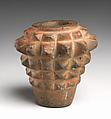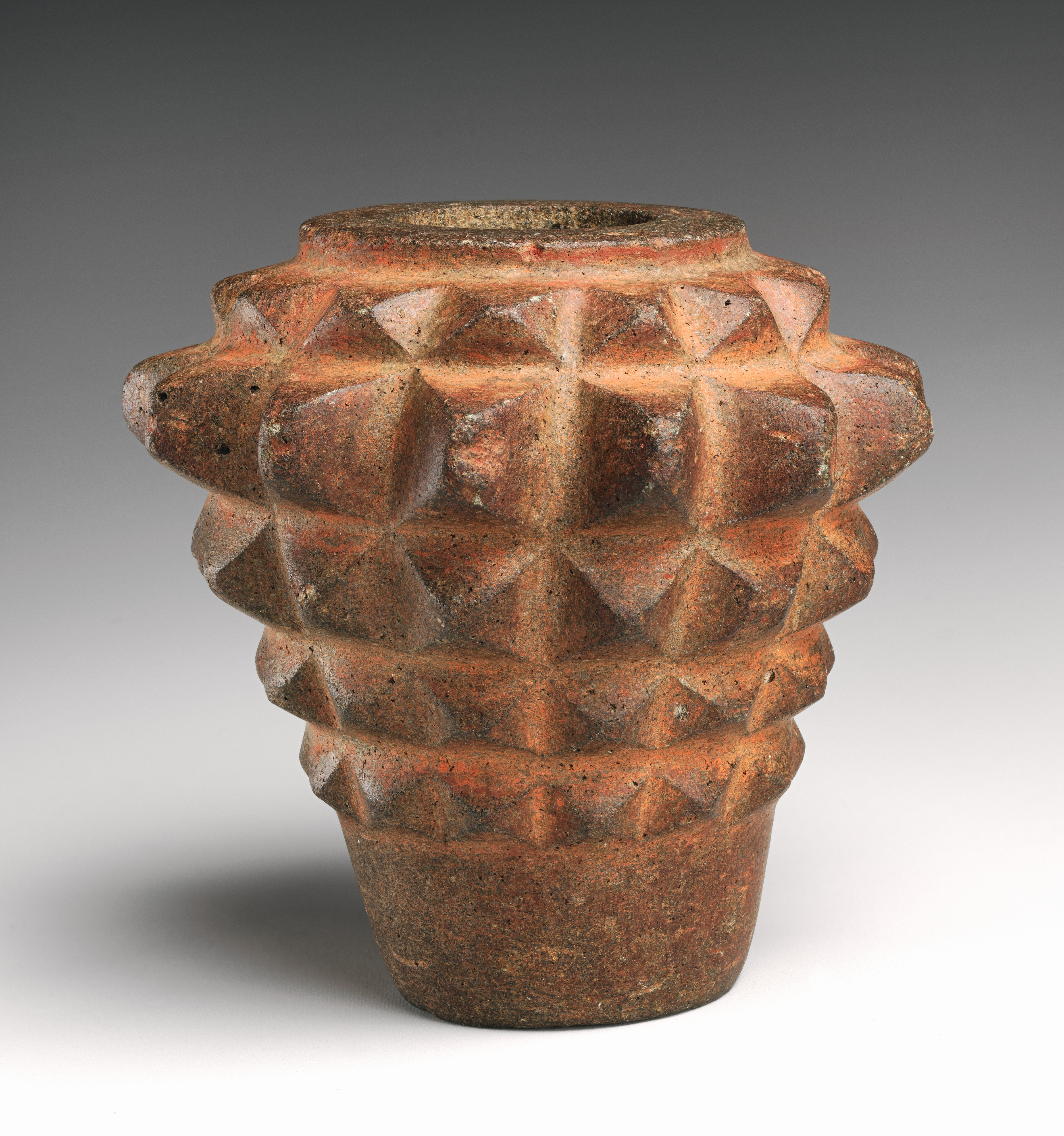Mace head
Not on view
This carved stone mace head with five concentric rows of nubs would have been slipped onto a wooden shaft for use as a weapon. Mace heads of this type are found in a variety of shapes including whorls, flanges, points, and other graceful geometric shapes. The formation of nubs along the side of the stone enhances its effectiveness, as when used, all of the force is concentrated at the narrow edges of the weapon rather than spread out over a broader surface area, similar to the way in which being stepped upon by a stiletto heel is much more painful than being stepped upon by a normal heel.
The proper cultural attribution of stone mace heads of this type is unclear. Carved stone mace heads were made as early as the middle of the first millennium B.C. in the Central Andes, by artisans of the Chavín and Cupisnique cultures. A sculpted mace head was excavated from a burial at Kuntur Wasi in the northern highlands of Peru (Fux, 2013:310, cat. no. 105). Objects stylistically similar to the present mace head have been excavated from burials of the Salinar culture, which dominated Peru’s northern coastal region from 200 B.C –A.D. 100 (Burger, 1998; Strong and Evans, 1952:55–56, pl. IIIE).
The process by which stone objects were crafted in this period is not known, but the shape was probably accomplished by initially chipping the rock with stone tools, followed delicate refinements including polishing the mace head with fine quartz sand as an abrasive. The numerous chips on the edges may be the result of striking other stones during battle.
References and further reading
Burger, Richard L., “Mace Head,” in Andean Art at Dumbarton Oaks, Vol. 1, edited by Elizabeth H. Boone (Washington, DC: Dumbarton Oaks Research Library and Collection, 1996), pl. 9, pp. 84–86.
Fux, Peter, ed., Chavín: Peru’s Enigmatic Temple in the Andes (Zurich: Scheidegger & Spiess, 2013).
Strong, William D., and Clifford Evans, Jr., Cultural Stratigraphy in the Virú Valley Northern Peru. The Formative and Florescent Epochs (New York: Columbia University Press, 1952).
Due to rights restrictions, this image cannot be enlarged, viewed at full screen, or downloaded.
This artwork is meant to be viewed from right to left. Scroll left to view more.



